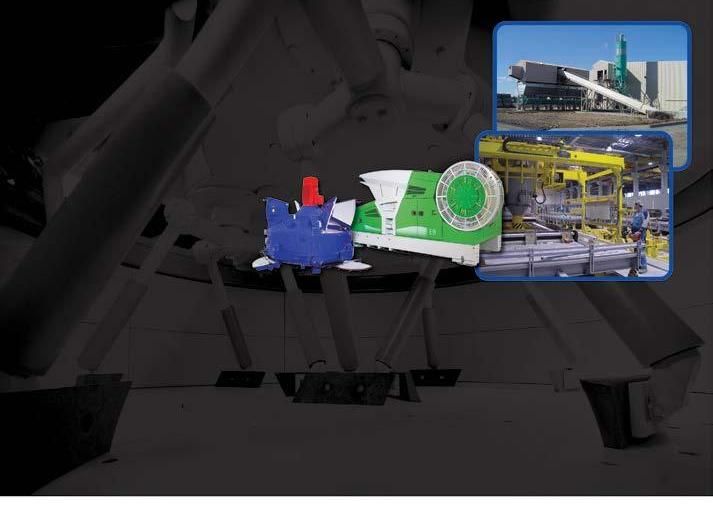
9 minute read
National Precast Feature
National Precast has released a new guide for engineers, builders, installers and grouting contractors, that will help them better understand the importance of, and suggested practices for designing and constructing grouted precast joints.
Advertisement
The new publication, Understanding Grouted Joints: A guide for engineers and building contractors, comes as forced evacuations of apartment blocks resulting from structural defects and fire safety concerns have shone the light fairly and squarely on the need for building industry reform.
According to National Precast, a part of this much needed reform is a better understanding of the role that grouted loadbearing joints play in precast structures.
“Loadbearing grouted joints play a critical role in precast concrete structures and need to be treated accordingly,” says National Precast CEO Sarah Bachmann.
PERFECT STORM CAN BE CATASTROPHIC
Bachmann says that there are three potential causes of inadequate grouting. “Grouting practices are often not adequately detailed in drawings. Construction programmes are usually rushed and grouting is often assigned to untrained workers.”
“All three together and we have the perfect storm, and that can result in a big price to pay later on,” she warns.
Inadequately detailed grouting, poor or even worse, absent grouting, can result in structurally ineffective joints, which can have catastrophic consequences.
BETTER UNDERSTANDING
National Precast’s new guide does this. It offers considerations and outlines their responsibilities for In-service Designers (refer AS3850.1:2015 Prefabricated concrete elements Section 1, 1.4 Definitions, 1.4.30 In-service Designer), for Erection Designers (AS3850.1:2015 Prefabricated concrete elements Section 1, 1.4 Definitions, 1.4.20 Erection Designer) and other engineers. As well, the guide provides some guidance on typical grouting design.
With around 35 years’ experience in senior roles within CSR, Holcim, Humes and Cemex, Peter Coombs has extended his involvement with National Precast. Already the organisation’s Queensland State Co-ordinator, Peter has also accepted a consulting role to look after National Precast’s work with roads’ authorities.
Since working with the likes of CSR, Holcim, Humes and Cemex, Peter has been consulting to a range of construction and building materials’ organisations, providing services including process analyses, gap identification, improvement planning and strategy development.
Peter takes over the roads’ advocacy work from Sean O’Gorman who was previously Technical Services Manager with the Association. Sean has moved into a full-time workload with the University of Adelaide as he pursues his PhD scholarship.
“We wish Sean all the best as his new venture with the University rolls out. He’s been instrumental in resolving several matters on behalf of members,” says National Precast’s CEO Sarah Bachmann.
“Builders, installers and grouting contractors have an important role to play too. We have included practical information on the different types of joints plus we’ve outlined typical grouting methods for grouting flat joints, inaccessible joints and ship-lapped joints,” Bachmann adds.
While not exhaustive, the guide references loadbearing walling elements. Similar principles apply however for columns and other elements, and also for non-loadbearing joints.
The guide is available from National Precast for $75+gst (colour printed copy) or $55+gst (PDF) plus postage. Email info@nationalprecast.com. au to order.
Contents and sample pages can be viewed at: www.nationalprecast.com.au/resources/
publications
“As well, we have many state-based manufacturers who supply the authorities. Developing and maintaining good working relationships with the roads’ authorities is imperative to very many of our members’ ongoing operations,” Bachmann adds.
Coombs will offer a different skill to what National Precast has experienced until now.
“Peter has worked in very senior management roles and is well across requirements for both precast manufacturers and state roads’ authorities. One of his key leadership strengths is being able to distil business frustrations down to simple solutions that form the basis of strategic redirection. We see this is a huge benefit going forward and we are pleased to welcome him to the team.” NATIONAL PRECAST WELCOMES NEW
RELATIONSHIP MANAGEMENT TALENT
A PUSH FOR SAFER CONSTRUCTION
With strict WHS requirements and practices, the precast manufacturing environment is strictly controlled and a very safe manufacturing environment with workstations generally isolated and appropriate PPE being used.
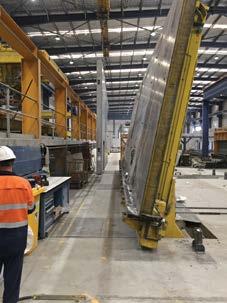
National Precast Concrete Association CEO Sarah Bachmann says that being manufactured off-site, precast offers safer and more efficient construction, and its use should be encouraged during the Covid-19 pandemic.
As construction continues, builders around the country are managing strict social distancing and hygiene requirements. So too are precast concrete manufacturers who are members of the Association, who supply factory-manufactured – or prefabricated – elements to essential infrastructure.
“The continued operation of the precast concrete industry is imperative to allow continued maintenance, functioning and construction, particularly of essential infrastructure like roads, rail and bridges, and buildings such as hospitals, government facilities and shopping centres,” says Bachmann.
Construction or maintenance of these structures very often uses off-site manufactured precast elements, whether they be walling, flooring, beams and columns, or stairs. As well, road and rail infrastructure works are underpinned by drainage systems that incorporate precast elements such as pipes, box culverts and other elements.
Continuity of supply of these items is key to maintenance works and continued construction of transport and building infrastructure, Bachmann claims.
MAKING CONSTRUCTION SAFER
“Much of our essential infrastructure already uses precast concrete, and if it doesn’t, it should… particularly when our community is at threat from this virus,” Bachmann claims.
Being manufactured off-site, precast concrete improves safety on construction sites because whole elements are delivered to site, instead of onsite fabrication. That means a reduced need for individual trades and labourers, eliminates the need for formwork, minimises waste and generally de-clutters sites.
WORLD LEADING REBAR MANUFACTURING EQUIPMENT

Supporting and supplying to Australasia's leading reinforcing manufacturers for over 40 years. Backed by MEPGroup Italy, Machinery Indents have the structure, experience and advice to help you with rebar processing equipment
• New and Used Machine Sales • Factory Layout Design • Programmed Maintenance • On/Offsite MEP Equipment Training • Genuine MEPGroup Spare Parts • Highest Quality Machinery • Manufacturing Process Consultation • Precast - Rebar Manufacturing Equipment

• High Automation and Flexibility • Customer Solutions • Manual Handling Solutions • Technical Assistance
MEPGroup Australasian Agent 43 Jesica Road, Campbellfield Victoria, Australia P: +61 3 9357 9769 F: +61 3 9357 0699 E: enquiries@mi-mep.com.au www.mi-mep.com.au
“Those considerations become very significant when we want some industries to be able to continue operating for economic reasons, and when we all need to obey social distancing and strict hygiene requirements,” Bachmann says.
SAFE FACTORY ENVIRONMENT
Additionally, the precast manufacturing environment is strictly controlled, with strict WHS requirements and practices. It is already a very safe manufacturing environment with workstations generally isolated and appropriate PPE being used.
“As well as adhering to social distancing and hygiene requirements, they have rolled out a myriad of other initiatives to address the threat of virus spread among its workforce, including separating shifts of workers, isolating workstations, staggering start and break times, distancing workers during breaks and other measures,” Bachmann comments.
Being manufactured off-site, precast offers safer and more efficient construction, and its use should be encouraged during the Covid-19 pandemic.
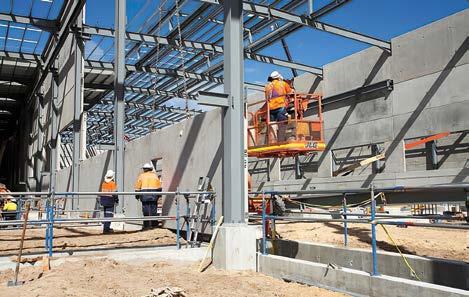
Bachmann welcomes the decision by federal, state and territory governments to allow construction, maintenance and associated manufacturing works to continue.“But we want governments to go one step further – to recognise the safety and efficiency of using precast and recommend its use. That’ll ensure all workers in the construction and manufacturing supply chain are better protected as they continue to deliver and maintain essential infrastructure.”
DO CONTROL JOINTS IN EXTERNAL PRECAST CONCRETE WALLS NEED FIRE PROTECTION?
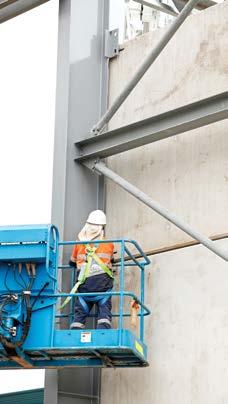
Properly detailed and constructed joints play a vital part in maintaining the integrity of the external envelope of a building, ensuring they conform to specified fire resistance and meeting any other requirements such as weatherproofing and acoustic performance.
Control joints are used not only in precast walling, but in a myriad of construction arrangements. With this in mind, we do need to do our own due diligence in reading an understanding the National Construction Code (NCC).
If an external precast wall, in particular a precast concrete boundary wall, requires a Fire Resistance Level (FRL), then should the control joint also have the same FRL?
This is a question that is commonly raised in the industry.
In the NCC, Volume 1, Section C Fire resistance> Part C3 Protection of openings> C3.1 Application of part, and C3.16 Construction joints, address fire rating in control joints of external walls.
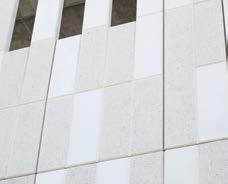
If reading C3.16 Construction joints alone - without taking into consideration C3.1 Application of part - then you may interpret the answer as ‘yes’.
But unlike many other building materials that are not masonry, the answer is no, on the basis that the joints in question are not larger than necessary for their purpose.
C3.1 Application of part quite clearly shows that 3.16 Construction joints does not apply to joints between panels in external walls of precast concrete panel construction.
NEW ABCB VIDEO ON FIRE RATING OF JOINTS
The Australian Building Codes Board (ABCB) has recently released a video on fire ratings in control joints, describing how in most cases, the NCC provides a concession for fire rating of external precast control joints – view the video at https://www.abcb.gov.au/Resources/Videos/
do-control-joints-in-tilt-up-concrete-externalwalls-require-fire-protection.

FIRE RATINGS OF PANELS AND SEALANTS
External cladding may be required to have a specified Fire Resistance Level (FRL) and precast cladding panels will usually be designed or tested to meet these requirements in accordance with AS 3600.
Unlike non-masonry building materials, control joints in external precast walls do not require the same FRL as the wall.

Most sealant manufacturers produce sealants that are designed to provide resistance to fire. The joint details and sealants should be designed and applied in accordance with the manufacturer’s recommendations to give the required level of fire resistance, if necessary.
